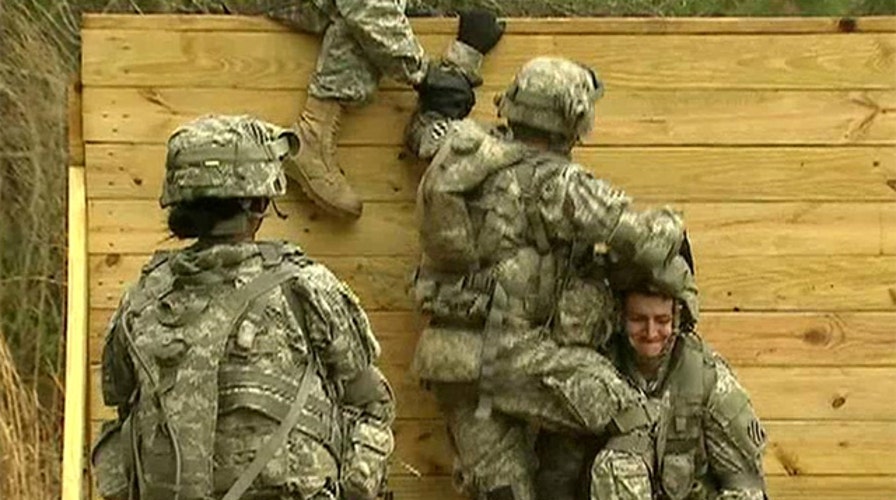Army conducts combat fitness study for men and women
Standards would focus on physical capability regardless of gender
FORT STEWART, Ga. – Female soldiers are joining their male counterparts in a study that will help the Army develop a test to see if new recruits meet the physical requirements for combat duty.
“I felt my heart rate go up with all the weight, but it’s not too bad,” said Pfc. Joaida Cruz, after completing an obstacle course wearing heavy combat gear.
The Army medic says she has no plans of joining the infantry in 2016, when the U.S. military is expected to allow women in combat roles. But she believes volunteering for the study will help other female soldiers who wish to serve their country in that capacity.
Women interested in combat duty will be required to meet the same physical requirements as their male counterparts. But Army researchers say the current fitness test — which involves push-ups, sit-ups and a two mile run — doesn’t evaluate the agility and strength required for rigorous, and often repetitive, activities on the battlefield.
“If there was no gender integration being proposed, this physical standards study would still be going on,” said Dr. Edward Zambraski, chief of the Military Performance Division at the U.S. Army Research Institute of Environmental Medicine (USARIEM).
Zambraski, who holds a Ph.D. in exercise physiology, said the study may help the Army reduce injuries by ensuring soldiers are placed in military occupational specialties, or MOSs, that they are physically suited for.
“The motivation for this is that we have a huge medical problem with musculo-skeletal injuries in soldiers — particularly soldiers in combat MOSs,” he said.
The soldiers who volunteered for the study perform activities similar to what they might do in combat, such as pulling casualties from a vehicle and loading heavy weapons. Zambraski likens the tests to a physical version of the Armed Services Vocational Aptitude Battery (ASVAB).
ASVAB is “a test that looks at various cognitive and other intellectual capabilities,” he said. “We don’t have the analogy test for physical. Yet we know that different military jobs have different (physical) requirements.”
Because women were previously restricted from combat roles, most of the study’s female volunteers had little experience with the activities involved. But the commander of Fort Stewart’s 3rd Infantry Division says it didn’t take long for his soldiers to overcome any learning curves.
“I came down here on day one and it was much like a high school dance,” said Maj. Gen. Mike Murray. “There were female soldiers on one side of one of these bays, male soldiers on the other side of the bay. I came down a week later and they were really integral teams.”
Army researchers say they expect to complete their study by October of 2015.
Fox News Producer Chip Bell contributed to this report.


